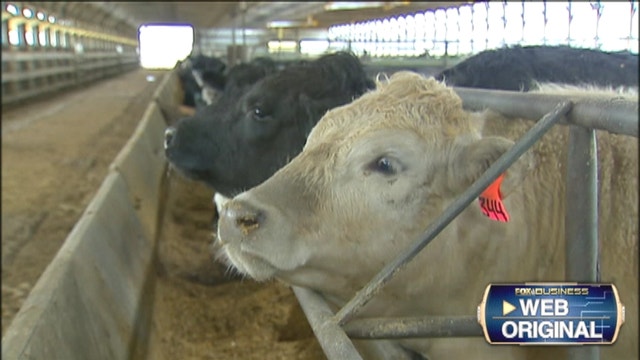What’s Bearish for Grain Prices is Bullish for Cattle Prices
Grains continue to set new lows, while cattle prices are moving higher.
Corn and soybeans fell to four-year lows this week as the U.S. Department of Agriculture said conditions for both crops are at their best since 1994. About 74% of corn and 72% of soybeans in the U.S. were in good to excellent condition during the week of August 31, the USDA said. Corn futures have fallen nearly 4% this week and soybeans are down roughly 0.5%.
The fall in corn prices is leading to an increase in feeder cattle futures this week. Corn serves as a main source of feed for cattle, so when corn prices fall it is less expensive for farmers to hold on to the animals longer, decreasing the supply of beef.
“Double-digit losses in corn futures point to lower feeding costs,” John Otte, economics editor at agricultural publication Farm Futures said in a note. “Lower costs of grain leave feedlots with more revenue from fed cattle sales with which they can use to bid up feeder cattle prices, and they typically do.” Feeder cattle futures are up more than 30% so far this year.
Live cattle futures were also trading higher this week, with prices on the Chicago Mercantile Exchange rising roughly 2% Wednesday. A week ago, packers unexpectedly spent more for market-ready, or cash, cattle for the holiday-shortened workweek, suggesting they need supplies in the near term.
“Cattle futures surged at midday Wednesday on ideas that processors could pay higher prices for cattle in the cash markets amid tight available supplies,” Otte said. “Prices generally soften as supplies rise seasonally and post-grilling season demand eases."
Geopolitical Woes Lead to Volatility in Crude Oil
Crude oil rebounded Wednesday on news of a possible ceasefire truce in Ukraine. Russia and Ukraine said they are working on steps toward easing the ongoing conflict.
“News of a potential ceasefire is spurring a relief rally after Brent reached a 16-month low yesterday (with WTI close to 7-month lows),” Matt Smith, commodity analyst at Schneider Electric, said Wednesday in a note to clients.
Safe Havens Under Pressure
Gold has seen a bearish start to the month, trading at its lowest level in more than two months. Futures fell $22.40, or 1.7%, to $1,265 a troy ounce on Tuesday, and extended those losses later in the week, as pressure from a stronger dollar lowered the appeal of the precious metal and other safe haven assets.
“The current dollar move over the last two weeks has been on stronger U.S. economic data, but also on the increased likelihood of a new stimulus package for the Eurozone, thus weakening the euro,” said Bob Haberkorn, senior market strategist at RJO Futures, pointing to the European Central Bank’s surprise rate cut and QE announcement Thursday. “I am looking for the dollar to continue higher for the next week.”




















